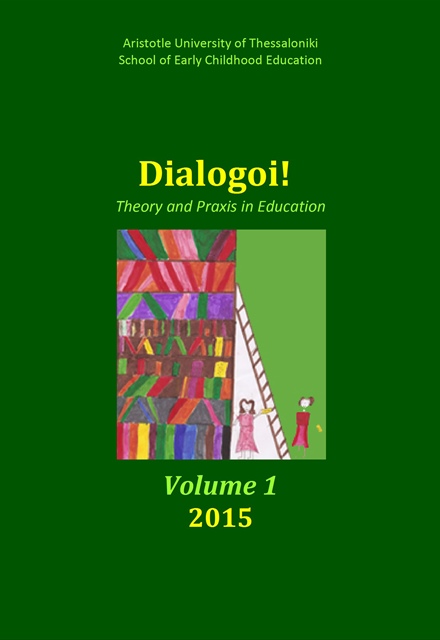The space as evolving material field of education in the collaborative kindergarten

Abstract
School environment plays an important role both in learning and in child development. A learning environment must seek to promote learning as a dynamic activity as well as to support cooperation. Through semantic mutations, the child overturns the topological relationships that exist in space and givesthem new subjective meanings connecting them wit h his/her activity, creating new places.
Cooperative teaching and learning facilitates and encourages the development of interactive relationships among children; through collaborative processes, it provides them with possibilities and opportunities to shape the space and adapt it to the wishes and needs of the educational process.
The purpose of this study is to highlight firstly, the importance of active participation of children in the re-planning of space, secondly, its conversion into an evolving material field of education and thirdly, its contribution to children’s learning and development.
The present study, which lasted for four months, was action research and took place in four kindergarten classes, with a sample of 81 children. The data collection tools were an observation guide, a semi-structured interview guide for children, a questionnaire and a photo shoot. What was used for the data analysis was the method of qualitative content analysis.
The results were quite remarkable. Children emerged as protagonists in their relationship with space as they were able to arrange it appropriately in order to serve their actions both within the small and the large group. Space acquired the distinctive quality of flexibility, as through its continuous re-planning, which was made with real or symbolic changes by the child during the educational process, it was associated with learning and the child’s needs and desires.
The conversion of space into an evolving material field of education was associated with an increase of positive interactions, as well as with the concept of pleasure within the educational process, the development of the element of creativity and the conquest of the cognitive objectives of the program.
Article Details
- How to Cite
-
Zisopoulou, E. (2016). The space as evolving material field of education in the collaborative kindergarten. Dialogoi! Theory and Praxis in Education, 1, 56–77. https://doi.org/10.12681/dial.1989
- Issue
- Vol. 1 (2015)
- Section
- Special Theme

This work is licensed under a Creative Commons Attribution-NonCommercial-ShareAlike 4.0 International License.
Authors who publish with this journal agree to the following terms:
- Authors retain copyright and grant the journal right of first publication with the work simultaneously licensed under a Creative Commons Attribution Non-Commercial License that allows others to share the work with an acknowledgement of the work's authorship and initial publication in this journal.
- Authors are able to enter into separate, additional contractual arrangements for the non-exclusive distribution of the journal's published version of the work (e.g. post it to an institutional repository or publish it in a book), with an acknowledgement of its initial publication in this journal.
- Authors are permitted and encouraged to post their work online (preferably in institutional repositories or on their website) prior to and during the submission process, as it can lead to productive exchanges, as well as earlier and greater citation of published work (See The Effect of Open Access).


